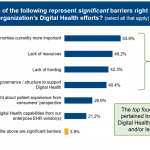President Trump’s Medicare chief, Seema Verma, may have signaled the beginning of the end of Medicare’s three-day rule—the requirement that Medicare will pay for post-acute care or rehabilitation in a skilled nursing facility (SNF) only if a beneficiary first spends at least three days as an admitted patient in the hospital. If she revises the rule, she will make many people very happy, though the effects on Medicare spending are less clear.
In the age of government by Twitter, Verma signaled a change with this somewhat cryptic Aug 4 tweet:
#Medicare beneficiary who requires skilled care in a nursing home? Better be admitted for at least three days in the hospital first if you want the nursing home paid for. Gov’t doesn’t always make sense. We’re listening to feedback.”
She isn’t tweeting in a vacuum. A federal lawsuit against the rule, first filed in 2011, has finally gone to trial. Kaiser Health News reports that Medicare might have to reimburse as many as 1.3 million beneficiaries if the plaintiffs win. At the same time, congressional pressure is growing to ease the effects of the rule on those receiving post-acute care. A bipartisan bill introduced in March would count observation stays towards the three-day rule.
Want to publish your own articles on DistilINFO Publications?
Send us an email, we will get in touch with you.
Regulatory vortex
Verma is right about one thing: Government doesn’t always make sense. Patients who need rehab are caught in a regulatory vortex that is beyond their control, and often costs them thousands of dollars. It has gotten worse in recent years, for at least two reasons.
The first is because Medicare also has imposed strict new limitations on when someone can be admitted to the hospital. As a result, many patients who once may have been admitted now must now be kept under “observation.” In general, if an admitting physician expects a patient will be discharged within two days, observation is the default.
Faced with steep retroactive financial penalties for admitting patients Medicare believes should have been kept under observation status, hospitals have shifted millions of patients to observation in recent years.
From 2012 to 2017, the volume of observation care increased by 19.7 percent. Between 2007 and 2017, outpatient cases increased by more than 43 percent while inpatient medical cases fell by 19 percent and inpatient surgeries dropped by 23 percent, according to the Medicare Payment Advisory Commission (MedPAC), which advises Congress on Medicare issues. Medicare spending for observation increased from $690 million in 2011 to $3.1 billion in 2016.
Medicare cost-saver?
Because Medicare pays roughly one-third less for an observation patient (the actual payment depends on the patients’ specific illness or injury), this change has the potential to be a big cost-saver for Medicare, at least for conditions such as heart failure.
But it also costs patients a bundle. Here’s why: Even if observation patients spend three days in the hospital, that time is not counted as a stay for the purposes of the three-day rule. Thus, a patient discharged to a SNF for, say, rehab, is on the hook for the cost. Worse, all this is baffling for patients and their families.
Imagine an 85 year old widow who falls and fractures a couple of ribs and punctures a lung. She goes to the local hospital emergency department and from there to a hospital room, where she stays several days. She is in a hospital bed where she is cared for by hospital nurses and doctors. But she is not an admitted patient. Thus, she has not satisfied the three-day rule. If she needs rehab (and she probably will), she will have to pay for it.
Hips and knees
The result: Per-enrollee SNF admissions in traditional Medicare fell by 15 percent from 2009-2026, according to the consulting firm Avalere Health.
But there is another way Medicare is shifting SNF costs to patients. It also is beginning to encourage orthopedic surgeons to do hip and knee replacements as outpatient surgery. Even though most of these cases still are being done in hospitals, patients are expected to be discharged in a day or two. Thus, the surgeries are treated as outpatient procedures so patients, and not Medicare, must pay for any rehab in a SNF.
While the three-day rule costs patients more, it is not clear how much it saves Medicare. A recent government study found that Medicare often pays for SNF care for those without three-day stays. And research into whether observation status itself is an overall cost saver is ambiguous.
Medicare already has created some exceptions to the three-day rule. For example, it will pay for SNF care without a three-day stay for patients who get their primary care through a “Next Generation” accountable care organization.
Verma seems to be suggesting that she’d like to take this another step. She may not end the three-day rule outright, but she seems like to be looking for ways to ease its impact. And that would be good news for many older adults.







